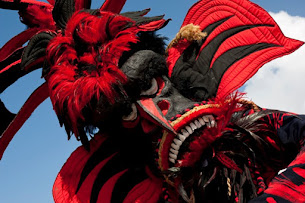It is no surprise that Panama is culturally diverse and it shows with the celebrations held every year. So if you are ever in Panama why not experience a little bit of what they have to offer. Here are 3 festivals and celebrations that Panama annually holds.
Panama Jazz Festival:
Founded by Panamanian pianist Danilo Perez and his family in 2003, over 300,000 Jazz fanatics from around the world have visited this festival held every year during early January. His intent for the Jazz Festival was to unify people by using music which obviously was a success by looking at the popularity of it. Acclaimed artists and instrument players such as Emmy and Grammy winner Dianne Reeves and Grammy Winner Terri Lyne Carrington have performed as well. Musicians are also invited to teach students from Panama and around the globe the art of Jazz in the educational events offered. The Government of Panama in 2016 announced the cultural and educational importance of the festival and now funds it.
Festival of Diablos and Congos:Deeply rooted in Afro-Panamanian culture and history this festival in Portobelo, Panama is held two weeks after Panama's Carnaval. During Spanish colonial rule the cimarrones are the ancestors of the present day Congos and they were Africans who were enslaved. The cimarrones tired of the cruel treatment by their owners escaped to form their own outlaw communities in the jungles. During this game the diablos (devils) with their whips and mask symbolize slave owners who try to recapture the cimarrones (portrayed by the Congos) then at the end the diablo is baptized then sold as well. The Congos wear clothing that are torn with hats and swords. The individuals that portray the diablos are chosen by their communities and have their elaborate costumes ready.
Carnaval:
The Carnaval in Panama occurs during February or early March and is typically celebrated for four consecutive days prior to Ash Wednesday. The history of Carnaval dates back to colonial times when Panamanians dressed up as the Kings and Queens for mocking purposes, slaves, and soldiers. During this Carnaval, fake clashes between different groups would arise, individuals would dance all night, and a Carnival King and Queen would be chosen. When Carnaval became an official holiday in 1910, new figures appeared such as devils in detailed costumes who represent slave masters with whips, beautiful traditional dresses called Polleras started to be worn, and colorful dance feathered outfits would be shown. The small town of Las Tables is most popular in hosting the Carnaval and they have two sides divided called tunas with Calle Arriba and Calle Abajo. The two sides elect their Queen with their courts and the fun begins with water fights,parties, floats featuring women with their traditional Pollera dresses, street dances for entertainment, and parades that happen in different cities. To end the night live bands perform a mix of music genres such as reggae, Caribbean influenced, and Panamanian folk and fireworks are displayed for everyone. In Las Tables to end the Carnaval they have the queens from the two sides and the public coming together early Wednesday morning for the burying the sardine celebration which consists of a sardine figure in a coffin for burial. The burial commemorates the end of Carnavel and for the start of Ash Wednesday.
Work Citing
“Where to Stay in Panama: Lodging Tips.” SmarterTravel, SmarterTravel, 31 May 2017, www.smartertravel.com/stay-panama-lodging-tips/
“Festival De Diablos y Congos: Portobelo, Panama Events.” Lonely Planet, 22 Sept. 2019, www.lonelyplanet.com/panama/colon-province/portobelo/events/festival-de-diablos-y-congos/a/poi-fes/1332506/358526
Czark, Betsy. “Carnival in Panama - The What, Where & Whys.” Living In Panama - Advice & Information, 25 Feb. 2017, livinginpanama.com/panama-travel/carnival-in-panama/
“Panama Carnival.” Panama Vacations, www.vacationtopanama.com/travel-guide/carnavales/
Muñoz C, Elsie. Panamanian Style Carnival! www.lasclementinas.com/panamanian-style-carnival/.




I love that you wrote about 3 festivals, especially the Festival of Diablos and Congos because it appears to have a lot of history and culture imbeded in it. I wish I could have seen a few more pictures of the festivals though.
ReplyDelete